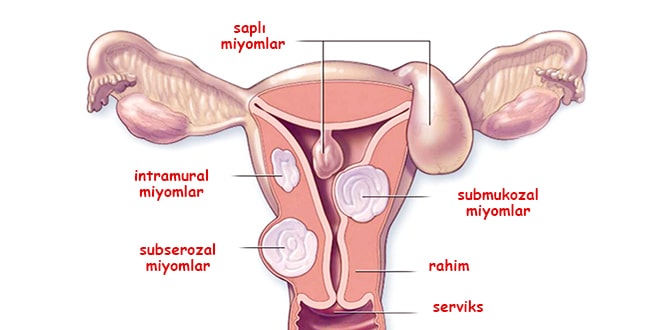
Myoma, is a benign tumor arising from the uterine muscles.
It occurs in 20 to 25 percent of women between the ages of 20 and 35. However, as the age progresses, the frequency of fibroids increases. Approximately 40% of women over the age of 45 have fibroids.
It is more common in women who have never given birth before. However, uterine fibroids are more common in some families. The incidence of fibroids decreases in women after menopause. In addition, a reduction in size is always expected. However, if there is still an increase in fibroid size despite the menopause period, malignant tumors come to mind first..
Fibroids can cause different complaints depending on the region where they are located on the uterine wall. Complaints caused by fibroids include menstrual irregularity, sudden onset groin pain, miscarriage, infertility, and long-term groin pain.
Although most fibroids do not cause problems, side effects can occur in some cases. In particular, sprains can be seen in fibroids that are connected to the uterus by a stalk. When this happens, it can cause pain, nausea or fever.
If a very large myoma has formed, this fibroid can cause the person to swell in the abdomen. In such cases, it can also make it difficult to perform a full gynecological examination.
Before the cause of infertility in couples is called myoma, other factors should be investigated very well. If fibroids are thought to be the cause of infertility, many women are likely to become pregnant again after treatment for fibroids.
Uterine fibroids in women are quite common. They usually show benign growths. One of every 4 or 5 women aged 35 years or older has fibroids. Fibroids usually do not cause any complaints at all. They may not even require treatment.
If you have fibroids or have had fibroids in the past, you should definitely be checked regularly by your doctor. It is important for your future to have regular check-ups.
Unfortunately, no drug is enough to eliminate the fibroids yet. However, with some medications, fibroids can be reduced. However, because the person will enter menopause during the use of the drug, menopausal symptoms occur in the person.
The most important thing here is from which region the myoma was removed. You should not get pregnant for the first 3 months after the operation for subserous and submucous fibroids, and for the first 6 months after the operation for fibroids located inside the uterine wall. After these periods are over, it is possible to get pregnant.
The important thing is in which region the fibroid is located. If it prevents the baby’s normal birth, that is, the natural development of the baby, or if it blocks the birth canal or does not allow enough uterine contractions to occur, a normal delivery may not occur. If these conditions are not in question, normal birth can occur.
What is Varicocele? Varicocele is the varicose veins that drain the blood in the testicles,…
What is Hemorrhoids ? It is a disease caused by the loosening of the veins…
What Is Monkeypox Virus? Symptoms and Ways of Transmission! The monkeypox virus, which has been…
What is Pelvic Venous Congestion Syndrome? (Failures Observed in Ovarian/Testicular Veins) What is Pelvic Venous…
What is Back Lift? Back stretching, excessive weight gain and aging may cause you to…
What is a Gastric Balloon? Gastric balloon (gastric balloon) is one of the obesity treatments…